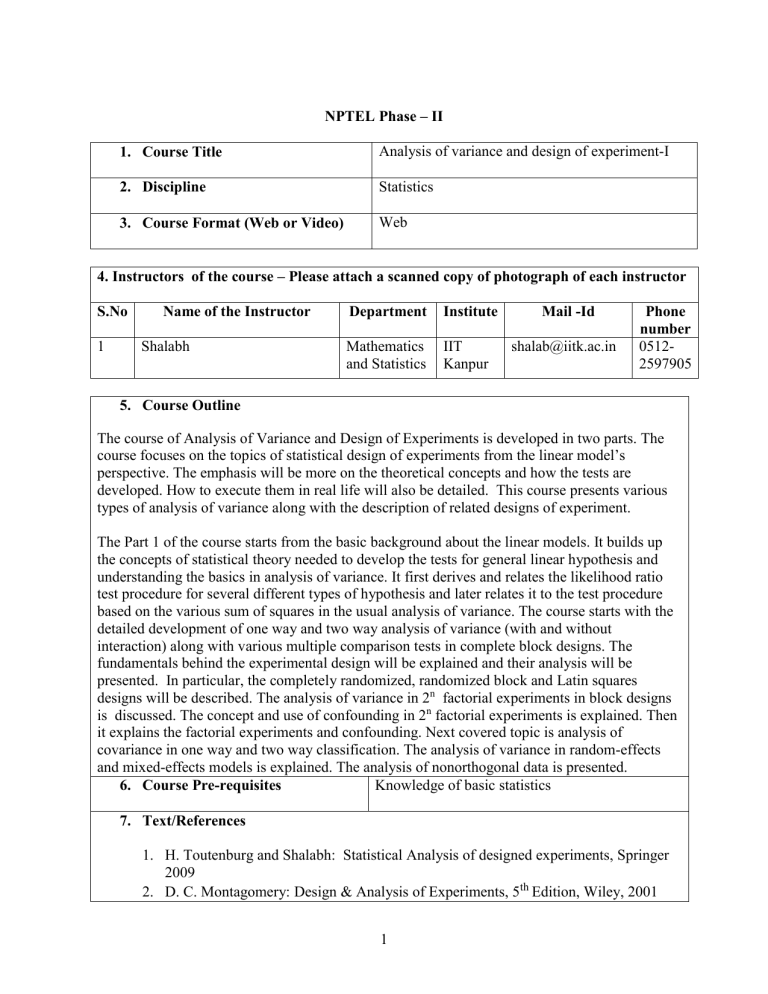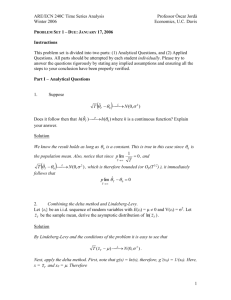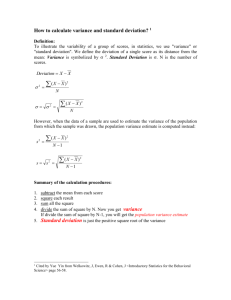Revised-Web-course-content-anova

1.
Course Title
NPTEL Phase – II
Analysis of variance and design of experiment-I
Statistics 2.
Discipline
3.
Course Format (Web or Video) Web
4. Instructors of the course – Please attach a scanned copy of photograph of each instructor
S.No Name of the Instructor Department Institute Mail -Id Phone number
1 Shalabh Mathematics and Statistics
IIT
Kanpur shalab@iitk.ac.in 0512-
2597905
5.
Course Outline
The course of Analysis of Variance and Design of Experiments is developed in two parts. The course focuses on the topics of statistical design of experiments from the linear model’s perspective. The emphasis will be more on the theoretical concepts and how the tests are developed. How to execute them in real life will also be detailed. This course presents various types of analysis of variance along with the description of related designs of experiment.
The Part 1 of the course starts from the basic background about the linear models. It builds up the concepts of statistical theory needed to develop the tests for general linear hypothesis and understanding the basics in analysis of variance. It first derives and relates the likelihood ratio test procedure for several different types of hypothesis and later relates it to the test procedure based on the various sum of squares in the usual analysis of variance. The course starts with the detailed development of one way and two way analysis of variance (with and without interaction) along with various multiple comparison tests in complete block designs. The fundamentals behind the experimental design will be explained and their analysis will be presented. In particular, the completely randomized, randomized block and Latin squares designs will be described. The analysis of variance in 2 n
factorial experiments in block designs is discussed. The concept and use of confounding in 2 n
factorial experiments is explained. Then it explains the factorial experiments and confounding. Next covered topic is analysis of covariance in one way and two way classification. The analysis of variance in random-effects and mixed-effects models is explained. The analysis of nonorthogonal data is presented.
6.
Course Pre-requisites Knowledge of basic statistics
7.
Text/References
1.
H. Toutenburg and Shalabh: Statistical Analysis of designed experiments, Springer
2009
2.
D. C. Montagomery: Design & Analysis of Experiments, 5 th
Edition, Wiley, 2001
1
8.
Suggested hyperlinks
6
7
8
3
4
5
9.
Suggested /Additional Readings 1.
M.D. Morris: Design of experiments- An introduction based on linear models, CRC
Press, 2011.
2.
G. Casella: Statistical Design, Springer,
2008.
3.
D. D. Joshi: Linear estimation and design of experiments. Wiley eastern 1987
4.
H. Sahai and M.I. Ageel: The analysis of variance-Fixed, random and mixed models,
Springer, 2001
10.
Detailed course plan : (Module wise / Lecture wise)
.
Module number
1
2
Topics Number of lectures
Some Results on Linear Algebra, Matrix Theory and Distributions 3
General Linear Hypothesis and Analysis of Variance 8
Experimental Design Models
Experimental Designs and Their Analysis
Factorial Experiments
7
6
5
9
10
Confounding
Analysis of Covariance
2
2
2 Analysis of Variance in Random-Effects Model and Mixed-
Effects Model
Analysis of Nonorthogonal Data
Exercises
2
1
Total 38
2











